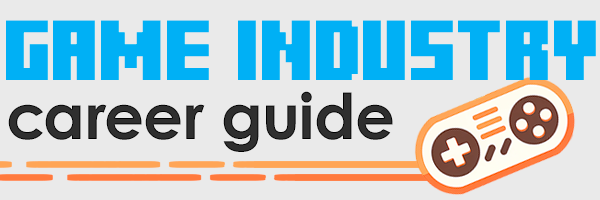How to Become a Video Game UI Artist
Meet Tamara Knoss, UI/UX Artist

Tamara has been active in the game industry for well over a decade – her early work was on the Nintendo Game Boy Advance as a 2D animator. More recently, she’s been a key user interaction (UI) artist and user experience (UX) designer on a number of titles including Battle Nations, Deer Hunter Reloaded, Samurai vs Zombies Defense 2, and Shinobi 3DS.
Tamara talks with us today about why it takes a thick skin and collaborative mind to work in UI/UX, and why doing interface design can be supremely rewarding for somebody with the right kind of personality. Could it be a good job for you?
In just a few sentences, how would you describe what you do every day?
Just a few sentences? Harsh, man!
First, it is worth noting that different studios have different job descriptions and duties for UI Artists. UI Artist, UX Designer, Visual Designer, these roles are often blended together at smaller studios.
My experiences have all been as a UI artist/designer hybrid. So with that in mind, my day to day tasks change depending on where the development cycle is.
- Early in development: Creating concept art for the look and feel of the UI.
- Core of development: Crafting wireframes, then setting the art up in the game engine for the engineers to make functional.
- Late development: Polishing art, adding animations, and pushing pixels to perfection.
As the roles of both UI Artist and UX Designer become more common, their duties are more clearly defined. UX Designers tend to focus more on the wireframes, flow, and all aspects of the player’s interaction with the game. UI Artists tend to focus on making that all look good.
How did you come to be in the UI/UX Artist job?
I was an Art Lead at a studio with smaller art teams comprised of Character Animators, Environment Artists, and an Art Lead. UI usually became the responsibility of the Art Lead because the other artists were focused on their specialty and didn’t have time, or (sadly) because no one else wanted to do it.
It didn’t take much for me to realize that UI calls for so many of the things I love to play with. Graphic design, animation, psychology, and what I like to call switchboard logic. When the studio grew to the point of having dedicated UI Artists on all the teams, I made the switch from being an Art Lead to UI Artist/Designer.
What’s your favorite part of the job?
There is nothing quite like the feeling of seeing all the loose ends get tied up – when that damn button is no longer 2 pixels too far south, when that subtle animated effect is finally hooked up just right. It is that magic moment when you look at the screen and it becomes a “real game” for the first time.
What about your least favorite part?
There is palpable pain in the frustration of seeing your work be “almost but not quite” what you envisioned.
It is that magic moment when you look at the screen and it becomes a “real game” for the first time.
Good UI is full of nuance that easily gets lost in translation, or in the rush to get things done on budget. It is worth considering learning some coding skills – if only to communicate better with Engineers about what you are trying to accomplish. Engineers love artists that are tech savvy, as it usually makes their lives easier. (Except when you call them on their BS. They really don’t like that as much.)
What aspect of the job would be surprising to people looking in from the outside?
The numerous, and lengthy discussions with large groups of people about “what exactly is the right shade of red for this brand?”
UI is extremely high profile for instant critique at all points of development, and EVERYONE has a VALID opinion. Everyone who gives you feedback is speaking from their experiences as a user, and they are not wrong. (Though, they may be in the 1 percentile of users, and they may present it like a jerk, but they aren’t wrong.) You have to take a lot of critique from people who haven’t learned how to properly give critique, and you have to learn to take it gracefully. The challenge is finding the harmonious compromises that are right for the product.
What kinds of talents and personality does it take to succeed at that job?
Empathy, courage of conviction, a splash of OCD (pixel perfect!), and a thick skin.
UX Designer and author Andrew Heaton has pointed out that, like Tron, we fight for the users. You need the empathy to view everything from the point of view of all of the different Users that want to have a great time, the Product Owner who wants to make lots of money, the Art Lead who wants it all to look good, the Engineer who wants the game to run fast, and everyone wants to go home at a reasonable time. You have to balance all of these demanding points of view, and then have the courage of conviction to defend your choices for the right reasons.
What advice would you give to somebody in school, who’s thinking about UI/UX Art as a career?
If you are interested in doing UI Art, I would recommend that in addition to the traditional studies of fine art, graphic design, and even animation, you should consider delving into UX Design. Human Computer Interaction. Learn CSS, HTML, JavaScript – maybe even some fully-featured code languages. The more versatility and power you wield, the more capable you will be at getting your vision accomplished. Not to mention the more desirable you will be to prospective employers.
What would you recommend for education, books, or other learning to start down the UI/UX Art career path?
It has often been said that the best UI goes unnoticed. This is because when done right, UI/UX can transcend into being the seamlessly-intuitive existence of the user in that world – so good that you don’t even think about it. Pay attention to the UI/UX in everything you see. It really is everywhere. Look at websites, AAA console games, the dashboard of a car, a microwave, a package of gum.
Pay attention to the UI/UX in everything you see. It really is everywhere.
But for games and interactive media, the most commonly recommended book I know of, and a great entry point, is Steve Krug’s book Don’t Make Me Think. That seems to be a good primer before delving into the crazy obsessive-tinkering land that is User Interface.
There are oodles of websites and several podcasts focused on the craft of UI/UX. Swim through the web and find some favorite trend-watchers and trend-setters to bookmark, and check them often. New discoveries and tricks for your toolbox are being shared every week, and with so much thoughtful enthusiasm.
There are plenty of books, essays, and blogs to keep you reading. It is a deep, but tight-knit, and helpful community. Seemingly everyone is a hardcore fanboy of some obscure visionary or another. Edward Tufte is one I’ve seen all the cool kids squee for. I’m a huge geek for Brendan Dawes, who has some fantastic lectures available online.
It won’t take long before you find your own personal visionary mentors. Some other great resources include:
You can connect with Tamara Knoss on her LinkedIn profile. If you found this interview helpful, please give back by sharing with friends on Facebook, LinkedIn or Twitter.
Read my new book!
Making games for a living is an incredibly rewarding career, but it’s hard to break in unless you have insider knowledge. This book levels the playing field.


I have a question: what do you need to know to build the UI(HTML,CSS?).
You don’t necessarily need to know HTML/CSS because you probably won’t be writing the code for the UI. But it would be helpful to have a technical understanding of the UI tech so you’ll know what’s possible and what’s not possible for the programmers. It will vary depending on the studio – many studios use a custom game engine, but others use commercially-available tech such as Unreal or Unity.
Jason, if I want to target being a UI artist specifically, what would be the best way of getting experience? Should I make an entire game in Unreal and Unity and focus on showing off the UI specifically, or say, join an amateur team and focus entirely on ui?
This is probably a very basic question to ask but most articles talking about getting exp focus on general game art exp rather than UI.
Thanks again for a great article.
A good approach is to target activities that contribute directly to your UI portfolio. Making a game yourself would require a lot of time/energy on the non-UI aspects, which isn’t where you want to spend your time (even on a UI-heavy game you’d probably spend 80% of your time on non-UI work). Contributing to an indie game team could be a good approach, if it’s a UI-heavy game and you are able to focus almost exclusively on the UI work. Also consider doing UI mockups for imaginary/nonexistent games, or do UI reworks for existing games — either as mockups, or for real if the game is open source. I wish you luck with your career transition!
Thank you, just the kind of info I was looking for.